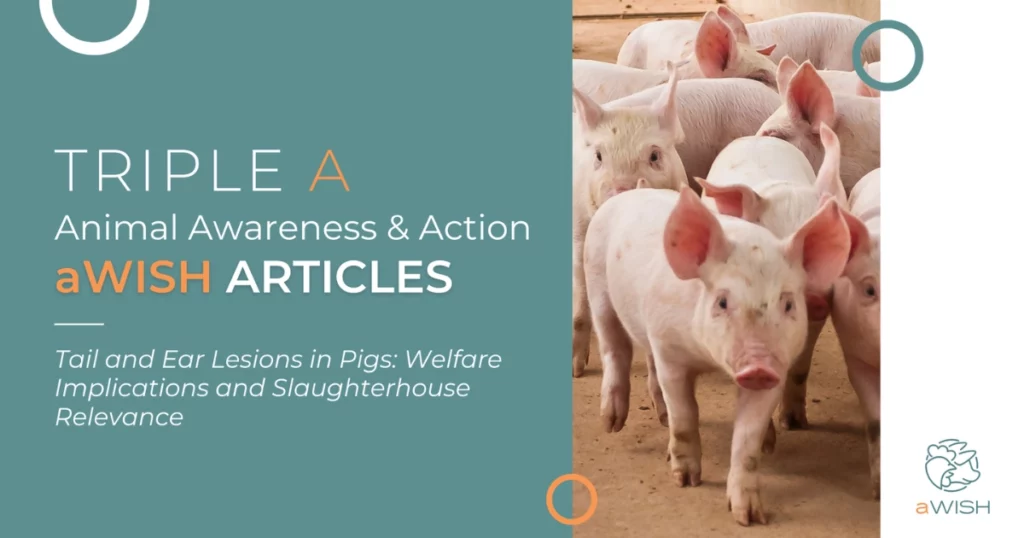Context of the Problem
Tail and ear lesions in pigs are caused by biting and chewing behaviours directed at other pigs’ tails and ears. Both tail as well as ear biting are multifactorial problems, and several factors such as genetics, health and housing environment can contribute to an outbreak. Causes differ between individual farms, which complicates interventions. Even when tails are docked, biting can persist and causes painful wounds, infections and long-term health problems. These lesions are a clear welfare concern, since pigs suffer from prolonged pain and, in severe cases, even systemic infections. Economically, tail and ear lesions reduce carcass value through trimming and downgrades, while raising food safety concerns.
Monitoring and aWISH Project
Lesions can persist until slaughter, providing a record of on-farm conditions during the fattening period. Slaughterhouses can implement standardized scoring systems for tail and ear lesions to help quantify the problem and track improvements over time. As part of the aWISH project, an automated system based on cameras and appropriate algorithms to score these lesions is being developed. Feedback to farms is provided via a data platform, aiming to provide a status quo for farmers and to encourage animal welfare improving actions. Maintaining communication between farms and slaughterhouses regarding lesion patterns allows corrective measures to be implemented quickly, reducing the frequency and severity of tail and ear injuries over time.
Best Practices
Since tail and ear biting has multifactorial causes, intervention strategies need to be adapted to the individual farm. For instance, improving environmental enrichment, lowering stocking densities and ensuring a good barn climate can reduce biting events. Feeding-related improvements such as ensuring a good feed quality or providing more feeding and drinking space can further have an influence on the occurrence of tail and ear lesions. To prevent outbreaks, pigs should be observed daily for signs of tail and ear biting and intervention strategies, including the separation of biters and victims and offering emergency enrichment such as manipulable materials, should be implemented.
Find out more about Best Practices regarding tail and ear lesions in our Best Practice Guide


